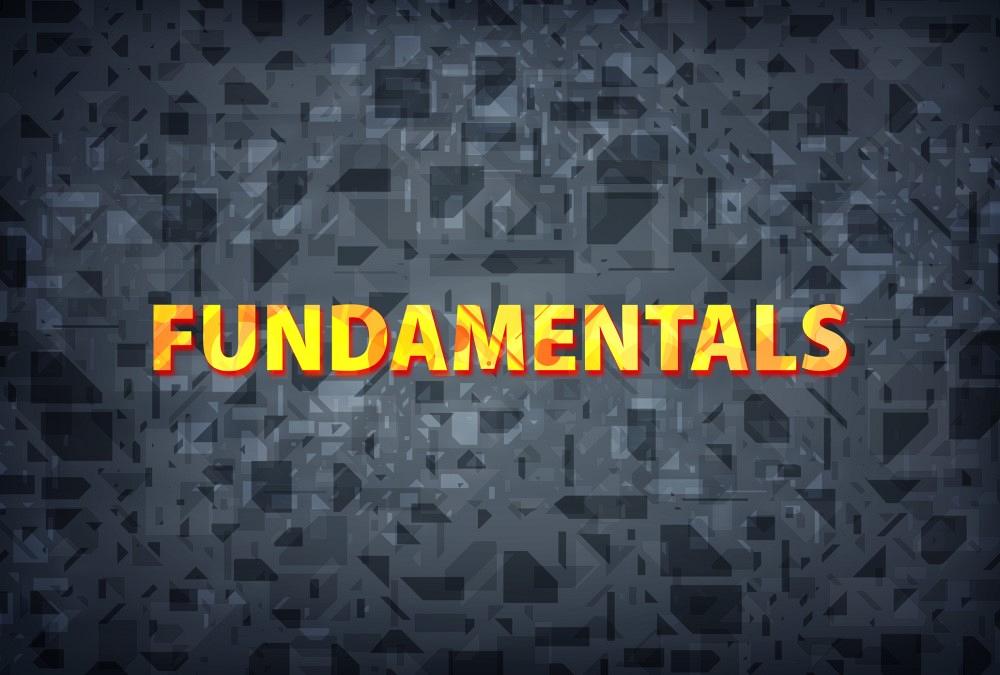Contributing editor
- FMA
- The Fabricator
- FABTECH
- Canadian Metalworking
Categories
- Additive Manufacturing
- Aluminum Welding
- Arc Welding
- Assembly and Joining
- Automation and Robotics
- Bending and Forming
- Consumables
- Cutting and Weld Prep
- Electric Vehicles
- En Español
- Finishing
- Hydroforming
- Laser Cutting
- Laser Welding
- Machining
- Manufacturing Software
- Materials Handling
- Metals/Materials
- Oxyfuel Cutting
- Plasma Cutting
- Power Tools
- Punching and Other Holemaking
- Roll Forming
- Safety
- Sawing
- Shearing
- Shop Management
- Testing and Measuring
- Tube and Pipe Fabrication
- Tube and Pipe Production
- Waterjet Cutting
Industry Directory
Webcasts
Podcasts
FAB 40
Advertise
Subscribe
Account Login
Search
Don’t forget the fundamentals in the metal stamping industry
Metal forming shops must build on the basics before getting too advanced
- By Kate Bachman
- October 25, 2021
Recently I relayed to a colleague that when I was coaching 5- and 6-year-old soccer players, I taught them good passing, fancy foot work, and advanced strategies in an effort to give them a leg up, so to speak.
And then, at the first soccer game, I realized that I had neglected to teach them the most important lesson: the fundamentals. They performed great passing, maneuvered the ball well, but didn’t score. The team lost almost every game after that until it finally kicked in that they had to kick the ball into the goal to score.
In the Sept./Oct issue of STAMPING Journal, “Stamping 101: Anatomy of a hydraulic press” dissects the press into its frames, structure, and components. It defines terms and functions, describes a hydraulic press’s advantages and disadvantages, and notes best applications. In essence, the article lays the groundwork for an education in hydraulic press stamping.
The article is a companion piece to our most popular online stamping article on stampingjournal.com: “Stamping 101: Anatomy of a mechanical press.” That this article is so popular online indicates to me that there is a hunger for the very fundamentals—either because there’s a continuous stream of new personnel into a department or plant, or because some plant personnel are taught only about the specific task they have to do at the time and never fully understand where that task f its into the whole.
Sometimes, in pursuit of the most cutting-edge technologies and the latest great thing, we forget that knowledge and competency start at a base level and new knowledge builds on what we already know.
Although advanced technology has simplified many operations, it still is critical for the operators, managers, maintenance personnel, and anyone involved in the stamping process to really know the press, how it works, its parts, and what its functions are.
Art Hedrick, our Die Science columnist, has devoted several columns to the basics of die design. In the issue, he writes specifically about die guidance components and distinguishes between what their functions are—and what they are not.
Ask the Expert columnist Tom Vacca responds to a reader’s question: “Where can we find skilled labor?” Vacca contends that stamping manufacturers need to develop their own apprenticeship programs. He outlines in detail the basics and fundamentals that the apprenticeship programs should cover.
Finally, as I am writing this during FABTECH week, I feel compelled to comment that attending this tradeshow is one of the best opportunities for learning the fundamentals of stamping, dies, materials, feeds and coil systems, lubricants, presses, and how press systems work.
Got thoughts? I’d love to hear from you.
subscribe now

The Fabricator is North America's leading magazine for the metal forming and fabricating industry. The magazine delivers the news, technical articles, and case histories that enable fabricators to do their jobs more efficiently. The Fabricator has served the industry since 1970.
start your free subscriptionAbout the Author

Kate Bachman
815-381-1302
Kate Bachman is a contributing editor for The FABRICATOR editor. Bachman has more than 20 years of experience as a writer and editor in the manufacturing and other industries.
- Stay connected from anywhere

Easily access valuable industry resources now with full access to the digital edition of The Fabricator.

Easily access valuable industry resources now with full access to the digital edition of The Welder.

Easily access valuable industry resources now with full access to the digital edition of The Tube and Pipe Journal.
- Podcasting
- Podcast:
- The Fabricator Podcast
- Published:
- 04/16/2024
- Running Time:
- 63:29
In this episode of The Fabricator Podcast, Caleb Chamberlain, co-founder and CEO of OSH Cut, discusses his company’s...
- Trending Articles
Tips for creating sheet metal tubes with perforations

Are two heads better than one in fiber laser cutting?

Supporting the metal fabricating industry through FMA

JM Steel triples capacity for solar energy projects at Pennsylvania facility

Omco Solar opens second Alabama manufacturing facility

- Industry Events
16th Annual Safety Conference
- April 30 - May 1, 2024
- Elgin,
Pipe and Tube Conference
- May 21 - 22, 2024
- Omaha, NE
World-Class Roll Forming Workshop
- June 5 - 6, 2024
- Louisville, KY
Advanced Laser Application Workshop
- June 25 - 27, 2024
- Novi, MI



























